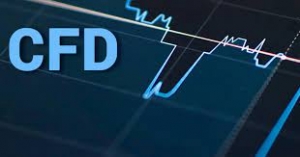A Property Management System (PMS) is an invaluable tool for processing payments more effectively, offering a range of features that streamline the entire payment process for property managers and tenants. Here's how a PMS helps in optimizing payment management and ensuring a more efficient workflow:
1. Automation of Payment Collection
One of the most significant advantages of using a PMS for payment processing is its automation of rent collection. Once tenants set up their payment preferences, the system automatically processes payments on the due date. This reduces the administrative burden on property managers, eliminating the need to manually collect rent payments or issue reminders. Tenants benefit from the convenience of automated transactions, reducing the chances of late or missed payments.
2. Secure Online Payment Methods
A PMS typically offers multiple secure online payment methods, including credit/debit card payments, ACH transfers, and direct bank transfers. This allows tenants to make payments through the method that's most convenient for them. For property managers, having these payment methods integrated into a single platform reduces the need to handle cash or paper checks, improving security and reducing errors. Additionally, these platforms often encrypt sensitive payment data, ensuring that all transactions are secure and compliant with privacy standards.
3. Real-Time Payment Tracking
PMS platforms allow property managers to track all payments in real-time, providing up-to-date financial records. When a tenant makes a payment, it is instantly reflected in the system, allowing property managers to monitor income streams and avoid discrepancies. For tenants, real-time payment tracking also helps them stay informed about their payment history and current balance, reducing confusion and disputes.
4. Payment Reminders and Notifications
To ensure timely payments, a PMS can automatically send payment reminders to tenants well in advance of the due date. These reminders can be customized and sent via email, SMS, or in-app notifications. This proactive approach helps tenants stay on top of their payments and minimizes the likelihood of late fees. For property managers, this reduces the time spent chasing late payments, contributing to smoother cash flow management.
5. Flexibility in Payment Schedules
A PMS allows tenants to choose payment schedules that suit their financial situation, whether it's monthly, weekly, or quarterly payments. This flexibility makes it easier for tenants to manage their finances, which in turn can lead to more consistent payments. Property managers can also set up different payment structures, such as partial payments or deferred payments for tenants experiencing financial difficulty. Over time, this adaptability fosters better tenant satisfaction and reduces payment-related disputes.
6. Automated Late Fees and Penalties
If a tenant misses a payment or fails to pay by the due date, a PMS can automatically apply late fees or penalties as per the terms of the lease agreement. These fees are calculated based on pre-set parameters, such as a flat rate or percentage of the rent. By automating this process, property managers can ensure fairness and consistency in handling late payments, while also reducing the time spent manually calculating and tracking overdue amounts.
7. Streamlined Accounting and Reporting
A PMS helps property managers streamline their accounting processes by generating detailed reports on rent payments, security deposits, late fees, and any other charges. These reports are automatically updated as payments are processed, providing an accurate and comprehensive financial picture without the need for manual input. For tenants, the system makes it easy to track payment history and see exactly what they've paid and what remains outstanding.
8. Consolidated Financial Data
Instead of managing multiple systems or spreadsheets for payment tracking, a PMS centralizes all payment information in one place. This consolidated data is beneficial for both property managers and tenants, as it offers clear visibility into financial transactions, making reconciliation easier and reducing the chances of errors. Over time, this helps property managers better manage their budgets, taxes, and operating expenses.
9. Integration with Other Property Management Functions
Many PMS platforms are designed to integrate with other property management tasks, such as lease management, maintenance requests, and tenant communications. This integration makes it easy to track all relevant information in one system, creating a seamless experience for both property managers and tenants. For example, if a tenant needs to request maintenance, the PMS can automatically check if any payments are outstanding before processing the request, ensuring that payment and service processes are linked and streamlined.
10. Improved Transparency and Communication
With a PMS, tenants can access their payment history, current rent balance, and due dates at any time, providing transparency. This self-service feature allows tenants to resolve any queries or disputes on their own, without needing to contact property managers. Property managers, on the other hand, have full visibility of all transactions and can quickly address any issues or discrepancies. This transparency enhances communication and trust between both parties.
11. Customizable Payment Terms
A PMS allows property managers to set up customized payment terms based on the specifics of the lease agreement. For example, some properties may offer flexible rent due dates or allow tenants to pay utilities separately. The system can automatically accommodate these variations, ensuring that all payments are processed according to the agreed-upon terms. This flexibility allows property managers to meet the unique needs of different tenants while maintaining a smooth payment process.
12. Reduced Administrative Work
By automating payment processing, reminders, and reporting, a PMS reduces the amount of administrative work for property managers. This leads to fewer human errors and frees up time for managers to focus on other important aspects of property management, such as tenant relations or property maintenance. Over time, this efficiency improves overall operational effectiveness and tenant satisfaction.
Conclusion
A Property Management System (PMS) is a powerful tool for processing payments more effectively by automating key tasks, offering secure payment methods, providing real-time tracking, and ensuring timely collection. For property managers, this results in streamlined operations, reduced administrative burdens, and improved financial management. Tenants benefit from greater convenience, flexibility, and transparency, leading to a smoother and more satisfactory rental experience. With its ability to automate, centralize, and track payments, a PMS ensures that payment processing is handled more efficiently and effectively in the long term.






